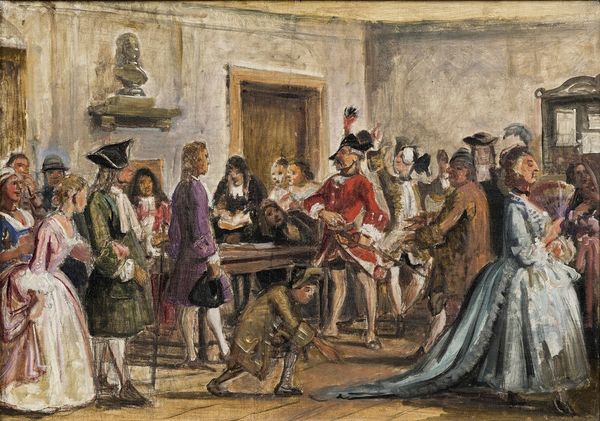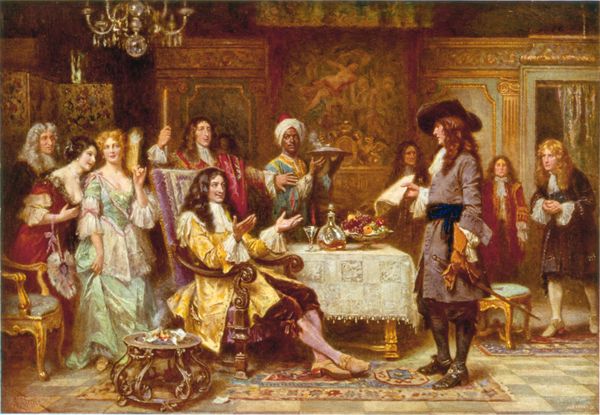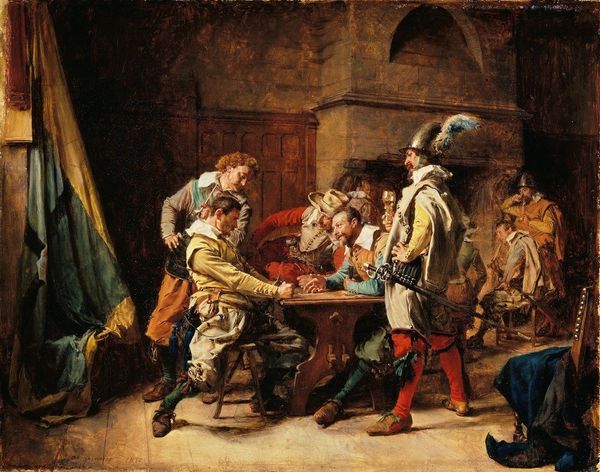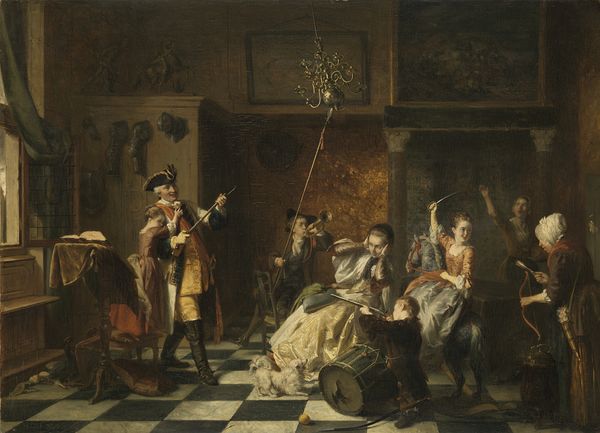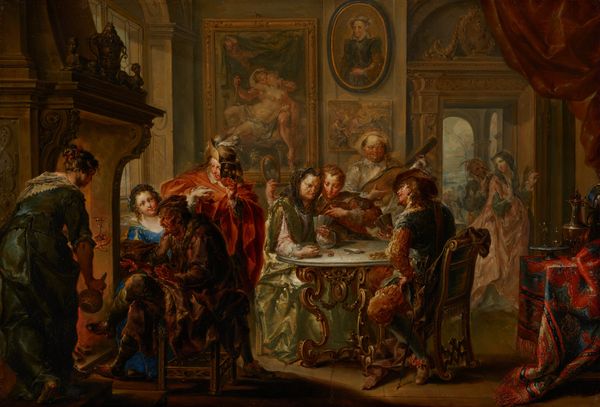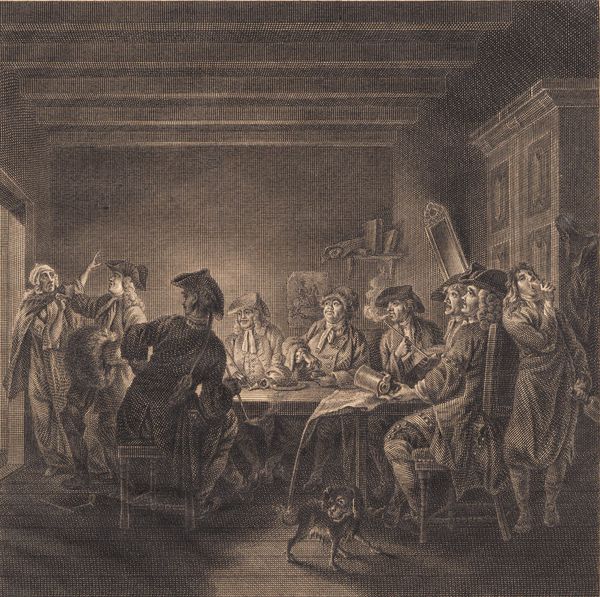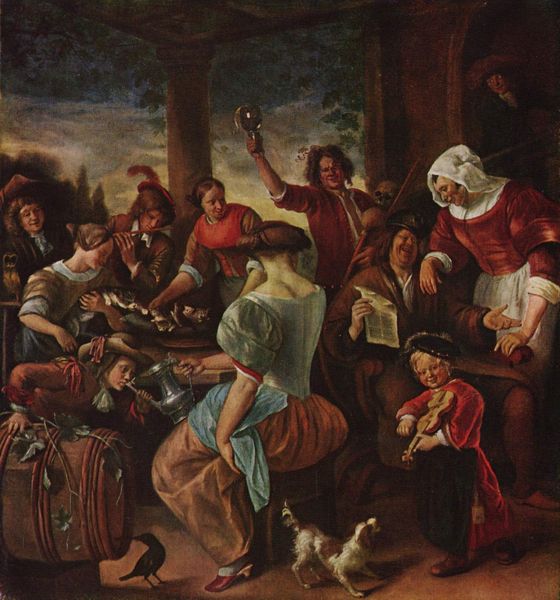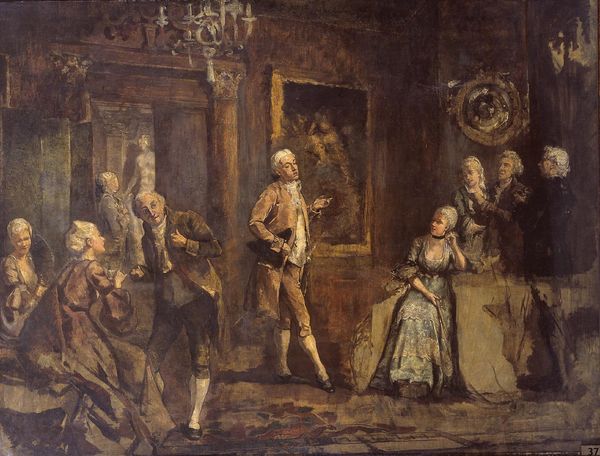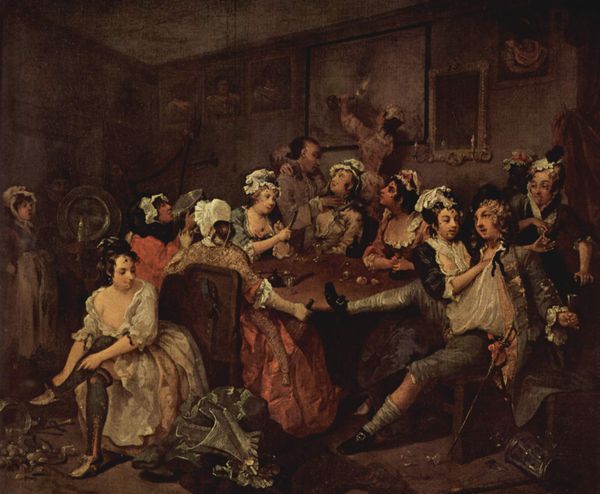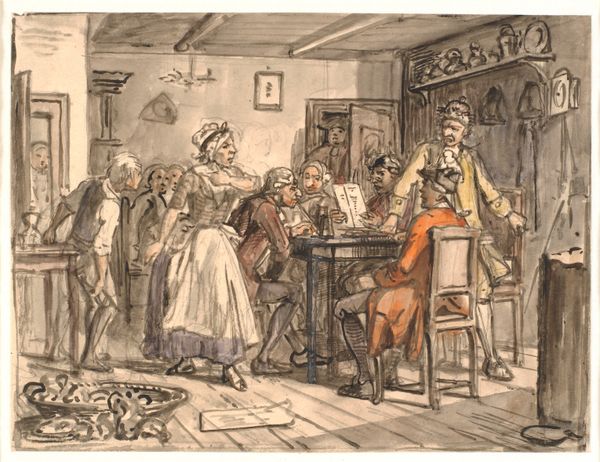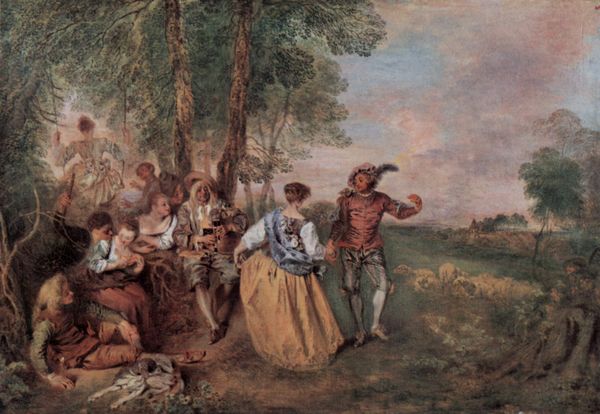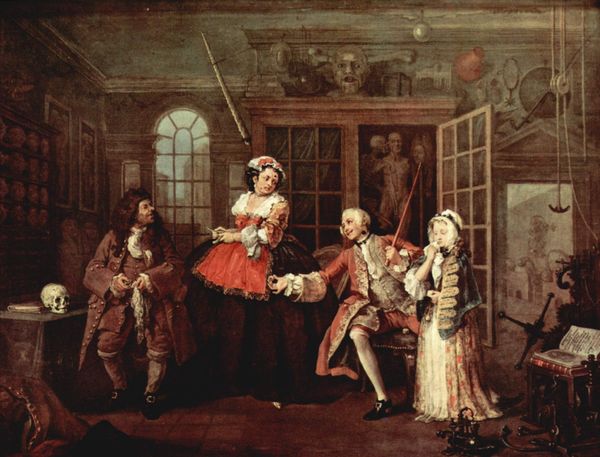
Dimensions: support: 457 x 385 mm frame: 581 x 517 x 85 mm
Copyright: CC-BY-NC-ND 4.0 DEED, Photo: Tate
Editor: Marcellus Laroon the Younger's "Interior with Figures" shows what looks like a lively gathering. I'm struck by the casual intimacy, like a snapshot of a private moment. What can you tell me about the context of this painting? Curator: Laroon's work gives us a glimpse into the social lives of the 18th century, when leisure and social gatherings became popular subjects. It hints at a growing middle class with disposable income and the desire to emulate aristocratic pastimes. Do you think the painting celebrates or critiques this social scene? Editor: I hadn't considered critique. I suppose the somewhat chaotic composition and the presence of what look like empty bottles could imply a more critical perspective on leisure. Curator: Exactly! Laroon’s work allows us to reflect on the values and behaviors of the time, and how artists navigated their roles in representing them. Editor: I see it now. Thanks, that's really helpful in understanding the artwork’s deeper meaning.
Comments
tate 8 months ago
⋮
http://www.tate.org.uk/art/artworks/laroon-interior-with-figures-n04420
Join the conversation
Join millions of artists and users on Artera today and experience the ultimate creative platform.
tate 8 months ago
⋮
Laroon, the son of the painter of the same name, trained as an artist but served in the Army, from which he retired in 1723/4. From then on he apparently turned to painting for pleasure, producing conversation pieces, musical assemblies and stage scenes, all devoid of the moralising content of Hogarth. It is not clear whether this polite private gathering is an actual scene, or an imaginary one. Whatever its status, the genteel but merry middle class society it depicts, drinking wine and smoking tobacco pipes, is a fair reflection of Laroon's own inclinations and level in society. Of a convivial nature, his friends were drawn largely from London's artistic, theatrical and musical community. Gallery label, September 2004
